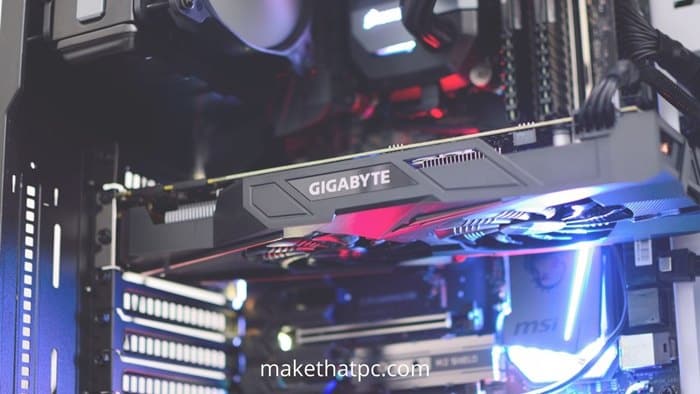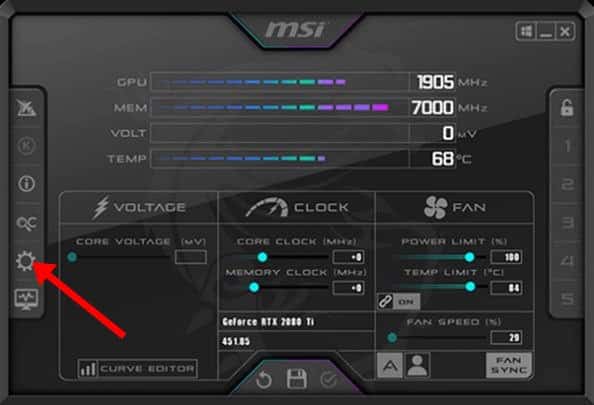Upgrading to a new graphics card is always a daunting task. Especially when you know the prices are way too high. But, the latest games coming up in the market will not listen to you. You will always find the latest games requiring more and more graphics power.
So, it is evident that you will think about getting a little more from your graphics card. Definitely, overclocking is the best thing to achieve better results from an existing graphics card. But, most of the users are not confident doing the same.
So, in this article, I will give help you get a little more from your graphics card without indulging in any scary overclocking strategies. So, without any further delays, let’s get started.

6 Methods to Boost Graphics Card’s performance
1. Update OS and Drivers
This one is obvious and most people would never mind updating their OS and Driver. The reason is clear. It is hard to find any relation between graphics performance and OS updates. Updating the drivers could be a thing to do.
If you are a gamer and seeing a huge drop in FPS, there could be bugs in chipsets and the OS itself. They might cause terrible performance lacks. So, it is good to keep your OS up to date.
If you don’t want to update all the drivers, make sure to update the graphics card driver. Just Google your Graphics Card’s name with driver word and get the latest driver from the official website. For example: “RTX 3080” + “Driver”.
You can also get the official driver update software from both AMD Radeon and NVIDIA GeForce. Using these software will do clean updates so that no previous data is there to create conflicts.
2. Extended Memory Profile
You might not be aware that the RAM runs at a standard speed regardless of the speed written on its product box. If you have a RAM rated for high-speed i.e. 3200 MHz or more, you need to turn on XMP in order to make the most out of it. Slow RAM can also result in degraded graphics card performance. XMP is actually a safe-to-use overclocking module designed for your RAM.
- In order to use this feature, you will have to enter the BIOS of your motherboard. Just restart your system and press the Del key while it’s turning on. In some motherboards, this special key can be different.
- Just find the memory or Advanced memory settings inside the BIOS menu
- Find the option X.M.P. and click Profile 1 instead of Disabled (Profile will already be included)
- Now, save the settings and exit
This method will work only for those with high memory speeds. However, it is always worth trying this method because it can enhance your graphics card performance a lot in most cases. Also, some games may be benefitted from this method while some may not.
3. Change Game Settings
Some of the readers might not be gamers. But, most of them are looking for these methods just to enhance FPS and boost gaming performance. So, this step is especially for gamers.
Now, game settings can be different in different games. But, if you just pay attention to lighting, shadows, and reflections, you can grab a lot of extra performance just with your existing hardware.
You can also turn off anti-aliasing if you can because it is going to free up a lot of graphics power which you can use for FPS.
- Make sure to keep the shadow settings on medium or low levels
- Fog resolution, cloud quality, distant shadow resolution, shadow mesh, and screen space reflection settings should be lowered.
In simple words, you should keep all the settings that seem unwanted to as low levels as possible.
4. Pay attention to cooling
Again, this one is obvious. But, most people don’t pay close attention to the case cooling. Especially, when the graphics are getting cooler through air fans, you need to create a proper airflow inside the case. For that, you should have powerful fans along with good orientation.
If the hot air from your CPU or GPU is getting trapped inside the case, it will make the graphics card hot without any need. It is good to use a liquid AIO cooler for your GPU if you have a powerful graphics card.
5. Change Graphics Card settings
In order to change graphics card settings, you can right-click your desktop and enter NVIDIA Control Panel or AMD Radeon. Change the settings given below and make sure to set on maximum performance.
Power Management Mode: Maximum Performance
Texture Filtering Quality: High Performance
These settings may increase the temperature of your graphics card a little. But, not so much. These settings are going to give you a huge boost in the graphics performance and FPS as well if you are gaming.
6. Change MSI Afterburner Settings (No Overclocking)
We are not going to go beyond the graphics card’s BIOS limits. But, we can still use MSI Afterburner to get a little more performance using simple tricks.
- Just install and open MSI Afterburner software

- Click the little gear icon
- Make sure to turn on: Unlock Voltage Control, Unlock Voltage Monitoring, and Force Constant Voltage
- Take the Power Limit slider and move it to its highest limit
- Now, enter the fan settings and set the curve like this:
0 – 30 degrees: 50%
30 – 90 degrees: 50 – 100%
These settings will not change the amount of voltage being pushed to the graphics card. Do not touch the core voltage, core clock, and memory clock sliders. You are not overclocking your GPU here but trying to provide room for the GPU to increase the frequency when the temperature is under control.
When should you upgrade?
It is always good to upgrade to a new graphics card when your existing one is one going beyond 30 FPS and you want to reach 60. Actually, there is no specific time to decide on an upgrade. You can upgrade if you want a better gaming performance and your older card is not capable of doing it.
Also, your budget and the current graphics card prices will impact your decision. Some people would like to overclock their existing graphics card before upgrading to a new one. So, if you can take this risk, just go for it. Otherwise, it is always a good time to upgrade when you have enough money in your pocket.
Why you shouldn’t overclock your graphics card?
Well, there is no problem in doing overclocking. But, doing it without any knowledge will cause issues. The most common issue with overclocking is that you are not able to make your system stable. You will see frequent shutdowns without any warnings.
So, before doing overclocking, make sure to do good research. Make sure to confirm whether your graphics card is capable of getting overclocked or not. Also, try to have a good cooling solution or improve the cooling quality of your case.
I hope you will find this article helpful.

I am Anshul Rana, an experienced author specializing in PC gear reviews and Windows 10 software tutorials. With a strong passion for technology and an in-depth understanding of the PC industry, I provide insightful and detailed analyses of computer peripherals, gaming gear, and software solutions. My writing style is concise yet informative, making complex topics accessible to both beginners and advanced users. Through my reviews and tutorials, I aim to offer valuable guidance, helping readers make informed decisions to enhance their PC experience and explore the vast possibilities of Windows 10 software.









